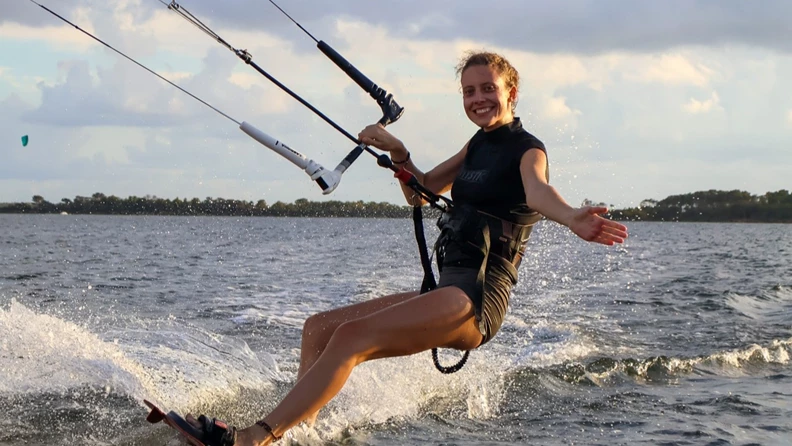You love the sea, dream of gliding over the waves, and want to try a new water sport—but you're asking yourself, "Surfing or kitesurfing? Which is easier to learn?" or " Is kitesurfing more difficult than surfing?"
The short answer: No, kitesurfing is not harder than surfing – it’s different.
Here you'll learn why you can often achieve success faster with kitesurfing than with surfing, what the learning curve looks like, and what you should know as a beginner.

Kitesurfing vs. surfing – two sports, a similar attitude to life
Let's start with the similarities between kitesurfing and surfing. Both sports have something magical about them: It's all about feeling and playing with wind, water, and freedom.
But the way to get there is different: While surfing uses the power of the wave , kitesurfing uses the power of the wind.
The hardest part of surfing is catching the right wave and standing up, but kiting is also about kite control and a feel for the wind.
Regarding the learning curve: What is easier to learn?
Kitesurfing: Technical start, fast progress
You will usually spend the first few hours of your kitesurfing course on land to learn how to control the kite properly.
But as soon as you get into the water, things move quickly. You'll learn how to use the power of the wind on the kite to pull yourself through the water (the so-called "body drag"), and then you'll practice the water start. You can find out more about learning to kitesurf here.
After 3-5 days of training, many beginners can already ride their first few meters – with the best feeling and a grin on their face.
Advantage: You can see immediate progress.
Important: A course with certified instructors (VDWS or IKO) is recommended for a safe start.
Here you will find the right kite school
Surfing: Easy start, longer learning phase
Surfing seems more intuitive at first – you grab your board, jump into the wave and go.
But: The path to the first real wave is longer.
Many beginners spend weeks or months before they can regularly get up and surf a wave properly.
Advantage: You need less material, one board is enough.
Disadvantage: High frustration factor at first until you learn to read the waves correctly. Furthermore, the right timing and efficient distribution of power while paddling are crucial. Otherwise, you'll be exhausted after just a few attempts.

So here is a final conclusion:
Kitesurfing is more technical , but you'll likely see visible results more quickly. Many small steps will lead you to your goal.
Surfing is easier to get started with , and you need less equipment. You can get started relatively easily, but the learning curve will likely be a bit slower than with kitesurfing. It takes longer to really know what you're doing and to be able to stay on the board for a longer period of time.
Note: Of course, your personal learning curve also depends on many individual factors, inclinations, and previous experiences. We can't make any general statements here.



.png?h=64&w=200&mode=max&scale=canvas&format=webp&autorotate=true)









.png)